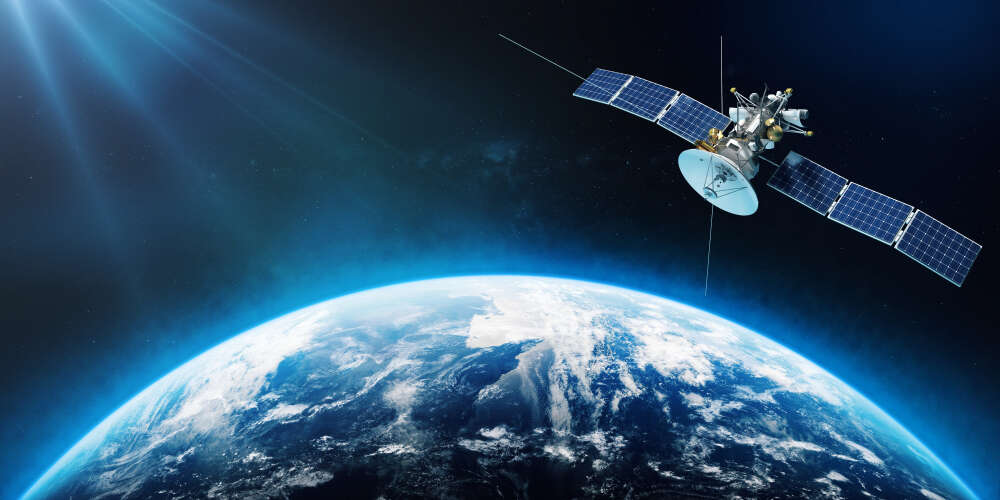
Over the next decade humanity will be taking to space like never before, with multiple commercial space stations and thousands of satellites planned for low Earth orbit. This will also see an infrastructure of data centres, edge computing and processing emerge to service that economy, and some of tech’s biggest names are keen to take advantage.

Microsoft has announced a new space software developer kit for its cloud platform, Azure, as well as a partnership with space-based infrastructure-as-a-service (IaaS) start-up LEOcloud for the purpose of delivering Space-based cloud services onboard Axiom Space’s space stations. It comes a week after IBM revealed a partnership with Sierra Space to develop a space computing infrastructure.
While those solutions are expected within the decade, the European Commission thinks we could go further and move whole data centres into space as a way to hit net zero carbon targets and combat the rising price of electricity, which is adding to the expense of operating a data centre on the ground.
The cost of launching payloads into orbit could reach as little as $33/kg by 2040, according to a report by CitiGPS while the cost of energy and impact on the environment of operating a large data centre on Earth continues to rise with centres in London reaching $1 for every watt of power consumed, a CJC report revealed. Globally, data centres used 220-320 TWh and there are growing calls for new developments to be banned.
The European Commission Horizon program has contracted Thales Alenia Space to lead a feasibility study for data centres in orbit. The aim is to investigate whether moving our data to space could have an environmental benefit, with energy to power them coming directly from the Sun.
Known as the Advanced Space Cloud for European Net zero emission and Data sovereignty (ASCEND) study, it will consider whether space clouds could help countries reach carbon neutrality by 2050.
Space data centres and net zero
The first goal will be to assess whether the carbon emissions from the production and launch of space-based data centres can be made lower than emissions generated from a ground-based data centre over the lifetime of both facilities, explained Yves Durand, director of technologies at Thales Alenia Space.
“This is very ambitious,” Durand says. “We want to see if putting data centres in space would allow Europe to lower its carbon footprint but to do that we would need to put a lot of capacity in space,” he said. This will include bringing down the cost of launch, allowing launch vehicles to be re-used and putting much more material into space in one go, reducing the number of required launches.
Durand told Tech Monitor the project would see the construction of a constellation of small satellites in low Earth orbit a few hundred miles above the ground. These would hold processing power and relay data between the Earth and space.
Other ideas could see data storage held in a network of very large satellites in geosynchronous orbit about 30,000km from the Earth housing racks of space-hardened storage devices.
Aside from the environmental impact there is also a cost element. Data centres on the ground require additional energy for cooling, as well as the power to keep them running. Moving it into orbit would eliminate most of this cost as the energy would be directly from the Sun and cooling from being in the vacuum of space, where out of direct sunlight temperatures drop to -170C.
There is a downside to those extremes though and it comes in the need to keep a consistent temperature for the equipment inside the satellite. This involves designing hardware that can, if necessary, withstand cycles of temperatures from -100 to over 100 C thousands of times per day.
Handling extremes and radiation
Avi Shabtai, CEO of orbital computing manufacturer Ramon.Space, says it is also necessary to create silicon that can withstand high levels of solar radiation and hardware that can operate for up to 15 years without any human intervention.
“Once you go out into space, you start to be affected by several phenomenon and one is radiation," Shabtai explains. "It is very hostile to electronics, so most of the devices that you would find on Earth if you don't design them to tolerate radiation, they will not live long in space. The radiation affects the silicon itself, the actual circuits."
To mitigate this, Ramon.Space has developed new space-hardened silicon circuits and hardware that one day will be available at scale for companies to deploy in orbit.
Shabtai describes it as "space commercial off the shelf". He says: "They're being manufactured in volume in regular processes, but most of the I think most of the intelligence is within the design.
"So you can design today very advanced components that will tolerate radiation. Then once you have the components and the elements, you start building the systems to dispel heat and maintain consistency.”
Ramon.Space is part of a consortium involving LEOCloud, Microsoft Azure and Axiom Space, the company building the first commercial module for the International Space Station that is set to launch in 2024. The consortium plans to bring edge computing to space. It will include access to AWS, IBM, Microsoft Azure and Red Hat services.
Reduced latency and security for space data centres
Dennis Gatens, CEO of LEOCloud told Tech Monitor there is a large potential market for space cloud, largely driven by those operating satellites in space who could benefit from operating workloads on cloud infrastructure near the device, rather than having to send it back to the ground.
This is particularly useful when producing significant amounts of data as in-orbit processing “reduced latency and security advantages” compared to beaming data back to a data centre on Earth.
“The value proposition is basically the same as edge computing on Earth where you move the resources and services as close as possible to the sources and/or users of data,” he explains. “The same value proposition applies in this new domain of edge computing, space.”
While the initial use case is aimed at providing a cloud extension and edge processing in orbit to allow the growing number of companies operating space hardware to manage the devices more efficiently, Gatens agrees that in future we could see data centres move to orbit.
“I envision that there will be strong demand for dedicated data centre facilities or space stations in LEO, cislunar [between the Earth and the Moon], and eventually beyond," he says. "These data centres can be accessible to users on Earth and space, and provide a hybrid cloud option to both."
Microsoft's Azure Orbital Space SDK, a developer kit will allow programmers to create, deploy and operate applications on orbital platforms. The application kit provides a set of templates, samples, and documentation to make it easy to get up and running as a space developer with template applications for common workload patterns, such as earth observation image processing.
”Our technology and service scales from SWAP-constrained satellites to the relatively high volume of a space station. Space edge IaaS can also exist on the surface of the moon,” Gatens argues.
Potential market for space cloud
IBM is also partnering with Sierra Space, the company developing human habitable modules for Orbital Reef, the commercial space station led by Blue Origin, the space company launched by Amazon founder Jeff Bezos. IBM is building a space cloud infrastructure that will allow various satellites and devices to communicate in-orbit and make it easier for data to flow between Earth and space.
While the initial work to build a space cloud is already happening, and efforts are underway to create an underlying infrastructure to allow the more than 4,400 active satellites to better communicate, the wider aim of bringing entire data centres into space is more a long-term dream.
Durand says realistically, assuming the feasibility study says it would have a positive impact on achieving net zero, we could start seeing the first elements of a space data centre deployed by the mid-2030s and wider infrastructure in place by the middle of the century.
The market will be there for it, says Steven Dickens, senior analyst at Futurum Research. “As climate change takes hold, we need to look towards innovative ways to drive down the impact of increasing computing demands on the environment," he says. “As launch costs reduce and commercial space flights become the norm, operating data centres in space becomes more and more viable. I expect to see innovation become a reality in the not-too-distant future.”
This cloud infrastructure will support a rapidly growing orbital economy that will include manufacturing, space solar power, tourism and even asteroid mining. The CitiGPS study claimed: "We expect the fastest growth to come from new space applications and industries, such as space-based solar power, space logistics, and Moon/asteroid mining, among others," the authors write. "These areas could generate ~$100bn in annual sales by 2040."






